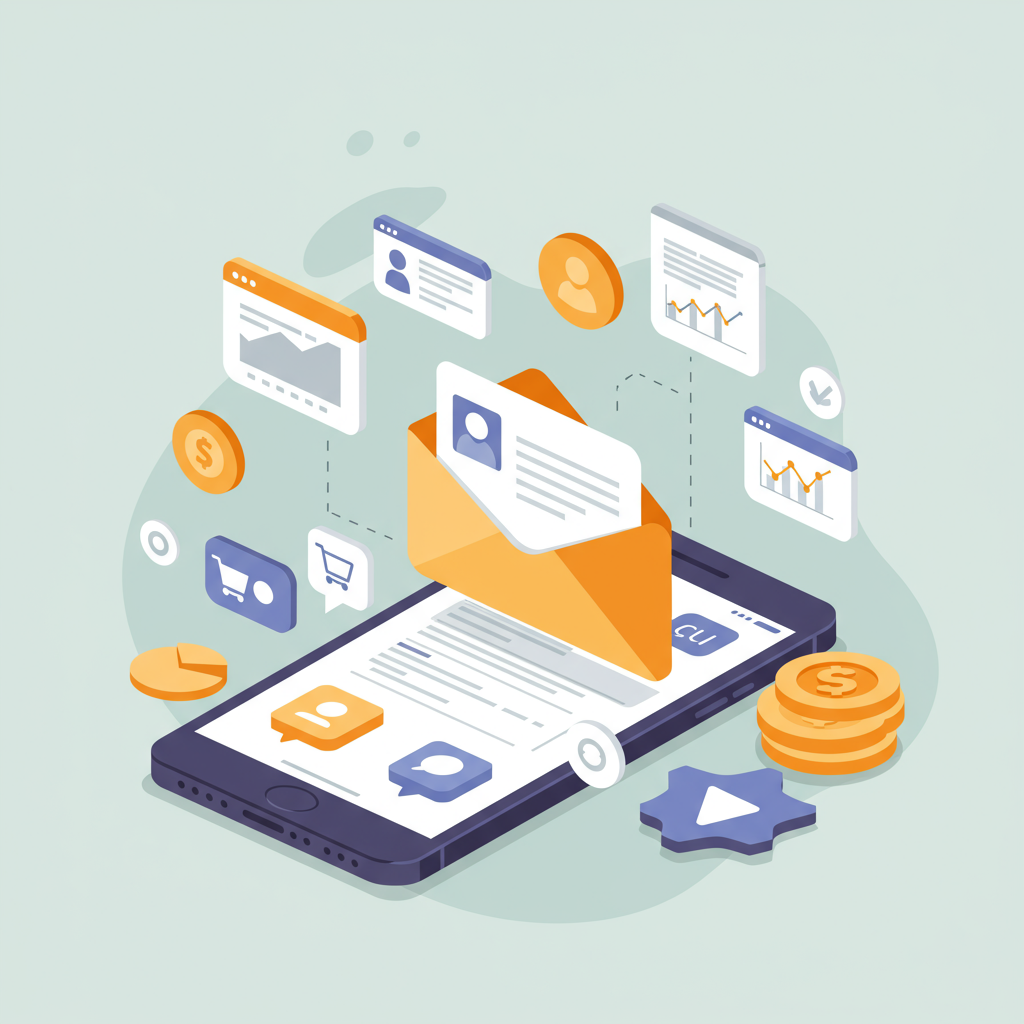Unlock the full potential of your Shopify store by leveraging advanced email strategies for unparalleled customer engagement and sales.
As a merchant navigating the ever-evolving landscape of e-commerce, I’ve come to realize that while trends come and go, one channel consistently delivers unparalleled ROI: email marketing. For Shopify store owners, this isn’t just a communication tool; it’s a direct line to your most valuable asset – your customers.
Looking ahead to 2026, the power of email marketing for Shopify stores isn’t diminishing; it’s becoming more sophisticated, more personalized, and more essential than ever before. The key is adapting to new technologies and consumer expectations.
From my own experience, I’ve seen how a well-executed email strategy can transform a struggling store into a thriving brand. It’s about building relationships, not just pushing products.
The foundation of any successful email marketing strategy begins with list building. In 2026, this means focusing on ethical, value-driven methods to attract subscribers who genuinely want to hear from you.
Think beyond generic pop-ups. Offer compelling lead magnets like exclusive discounts, early access to new collections, or valuable content such as guides and tutorials. Make the opt-in process seamless and transparent.
Once you start building your list, immediate segmentation is paramount. Don’t treat all subscribers the same. Segment based on purchase history, browsing behavior, demographics, or even how they opted in.
This leads us directly to hyper-personalization, which will be the cornerstone of effective email marketing in 2026. It’s no longer enough to just use a customer’s first name.
Leverage data to send highly relevant product recommendations, personalized content, and offers that resonate with individual preferences. AI-powered tools integrated with Shopify can analyze vast amounts of data to predict what a customer might want next.
Automation is the backbone of efficiency for any Shopify merchant. Setting up robust email flows ensures you’re engaging customers at critical points in their journey without manual intervention.
Your welcome series is your first impression. I always recommend a sequence of 3-5 emails that introduce your brand, share your story, highlight best-sellers, and offer a small incentive for their first purchase.
Abandoned cart emails remain one of the highest ROI automations. In 2026, these should be more than just a reminder; they should address potential objections, offer social proof, or even provide a limited-time incentive.
Post-purchase flows are crucial for building loyalty and encouraging repeat business. I use these to thank customers, provide order updates, ask for reviews, and recommend complementary products.
Don’t forget win-back campaigns for dormant customers. A well-crafted series can re-engage subscribers who haven’t interacted with your brand in a while, perhaps with a special offer or a reminder of your value.
Browse abandonment emails, triggered when a customer views products but doesn’t add to cart, are another powerful tool. These can gently nudge them back with personalized suggestions or answers to common questions.
Beyond automated flows, your regular campaign emails need a strong content strategy. Focus on providing value, not just selling. Share behind-the-scenes glimpses, educational content, or lifestyle inspiration related to your products.
Storytelling is incredibly powerful. Share the origin story of your products, the passion behind your brand, or testimonials from satisfied customers. People connect with narratives.
Incorporating User-Generated Content (UGC) like customer photos and reviews into your emails builds trust and provides authentic social proof. It shows real people loving your products.
When it comes to design, mobile-first is non-negotiable. The majority of your customers will open emails on their smartphones, so ensure your layouts are clean, images are optimized, and calls-to-action are prominent.
Accessibility is also increasingly important. Use clear fonts, sufficient color contrast, and alt text for images to ensure your emails are readable and usable for everyone.
I can’t stress enough the importance of A/B testing. Test everything: subject lines, sender names, call-to-action buttons, email layouts, and even send times. Small tweaks can lead to significant improvements.
Always keep an eye on your key performance indicators (KPIs): open rates, click-through rates, conversion rates, and overall ROI. These metrics tell you what’s working and what needs adjustment.
Deliverability is critical. Ensure your sender reputation is strong by avoiding spammy language, maintaining a clean list, and authenticating your domain with SPF, DKIM, and DMARC records.
Data privacy regulations, like GDPR and CCPA, will continue to evolve. I always ensure my email practices are fully compliant, prioritizing transparency and giving customers control over their data.
Shopify’s app ecosystem offers a wealth of powerful email marketing platforms like Klaviyo, Omnisend, and Mailchimp, which integrate seamlessly and provide advanced features for automation and segmentation.
Looking further into the future, I anticipate even more sophisticated AI applications, predictive analytics to anticipate customer needs, and potentially interactive email elements becoming mainstream.
My advice to any Shopify merchant is to view email marketing not as a chore, but as an investment in long-term customer relationships. It’s a direct, owned channel that bypasses algorithm changes.
What are your thoughts on these strategies? I’d love to hear your perspective and what challenges or successes you’ve experienced with email marketing for your Shopify store.
By embracing these tips for 2026, you’re not just sending emails; you’re building a loyal community, driving repeat purchases, and ultimately, securing the future success of your Shopify business.






